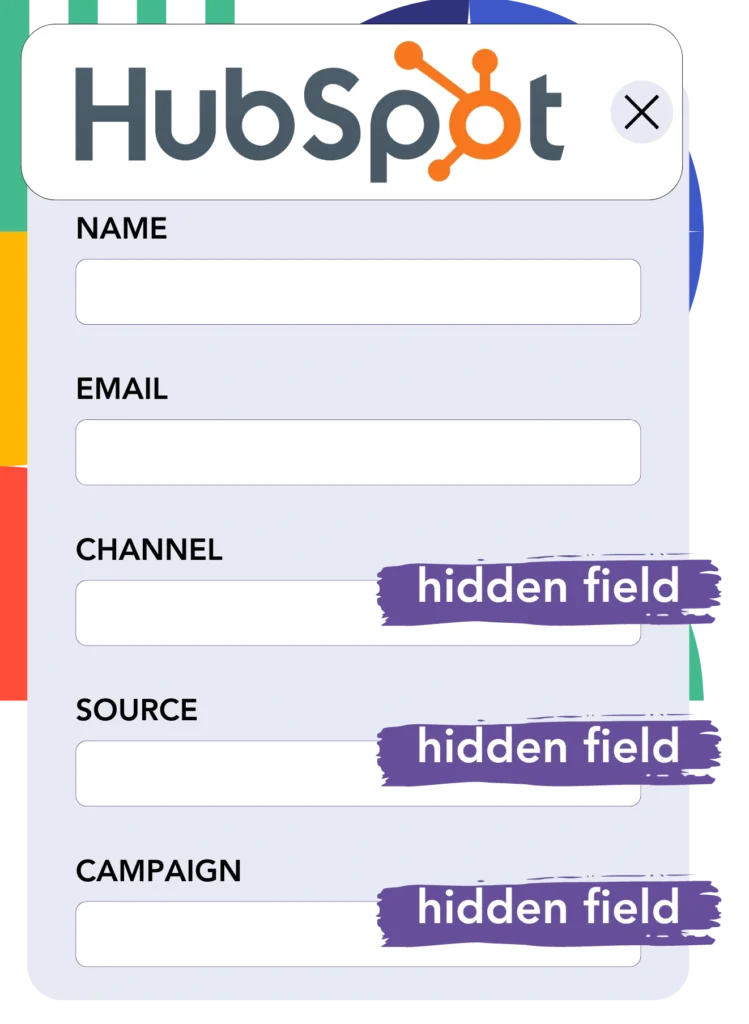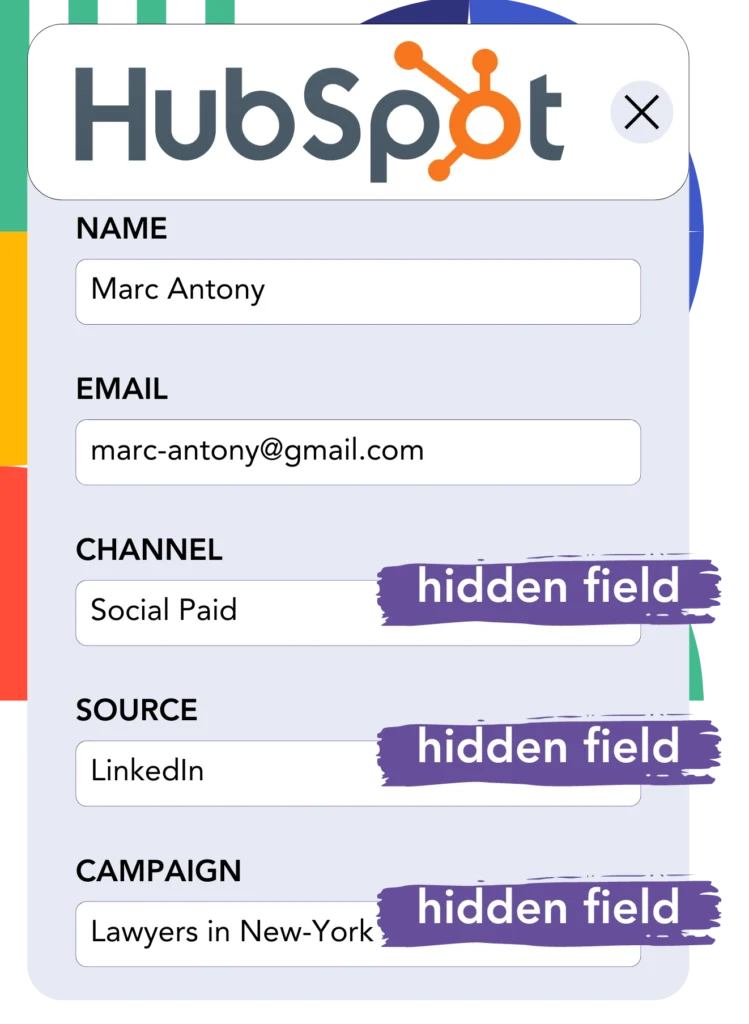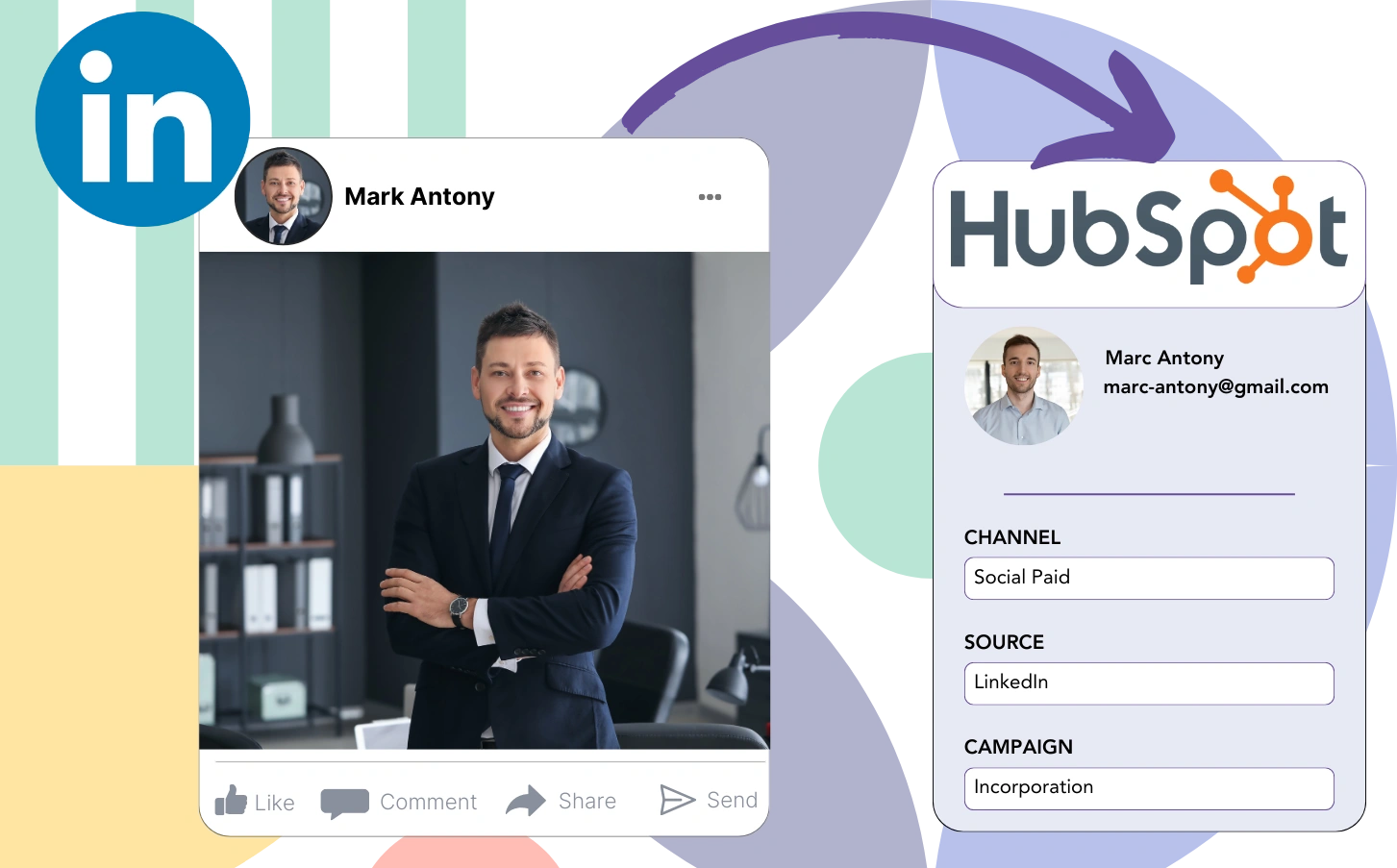Are you promoting on LinkedIn but can’t identify which ad is generating your leads, sales, and revenue?
You might know how many leads each LinkedIn ad generated, but breaking it down by individual leads is difficult.
This means you can’t identify which LinkedIn ad converted leads to customers, limiting your ability to optimize your budget.
Leadsources takes care of this problem.
Leadsources resolves this by capturing your LinkedIn ads data (campaign, audience, ad, etc.) down to the lead level.
Comprehensive LinkedIn ad data, including campaign, audience, and ad for each lead, can be stored in HubSpot Forms.
You can run reports like “Ads that generated the most leads” to help decide which ad to promote or discontinue.
Let’s get started!
Capture LinkedIn ads in HubSpot Forms
Step 1: Add Leadsources in the head tag of your website

Sign up to Leadsources.io, and benefit from our 14-day free trial.
Insert the tracking code for Leadsources into the head tag of your website.
No code is necessary, follow this easy step-by-step guide.
Step 2: Add the UTM parameters to your LinkedIn campaigns

Include the UTM parameters you intend to track in all your LinkedIn ads (campaign, audience, ad, etc.).
For instance, consider incorporating these UTM parameters in the links of your LinkedIn ads:
- UTM_source
- UTM_campaign
- UTM_term
- UTM_content
Remember that Leadsources captures lead source data like channel, landing page, and landing page subfolder, even in the absence of UTM parameters, to create a thorough overview of your leads source at the lead level.
Step 3: Add the hidden fields in HubSpot Forms

When someone submits your HubSpot Forms form, the hidden fields are populated by Leadsources with the LinkedIn ads data (campaign, audience, ad, etc.).
Use our step-by-step guide to add hidden fields in HubSpot Forms to finish the setup.
The LinkedIn ads data is then stored directly in your HubSpot Forms form by Leadsources (see Step 4).
Step 4: Capture the LinkedIn ads data in HubSpot Forms

Leadsources captures LinkedIn ad data (campaign, ad set, audience, ad, etc.) when a user clicks on your LinkedIn ad and lands on your website.
Leadsources automatically populates the hidden fields of your HubSpot Forms form with the LinkedIn ads data.
When the form is submitted, both the LinkedIn ads data and the form’s responses are sent to the HubSpot Forms submissions page for each lead created.
How does Leadsources work?
When you add the Leadsources tracking code to the head tag of your site, it allows you to capture LinkedIn ads data (campaign, audience, ad, etc.) every time a visitor accesses your website.
The LinkedIn ads data is stored in the hidden fields of your HubSpot Forms form at this stage.
Leadsources will obtain the following visitor data:
- Channel
- Source
- Campaign
- Content
- Term
- Landing page
- Landing page subfolder
This helps you monitor on key lead source details even when UTM parameters are not applicable, for instance, when your traffic derives from organic sources like:
- Google Search
- Instagram bio link
- Social media posts
- Etc.
While the majority of tools capture lead data solely when UTM parameters are utilized, Leadsources continues to work without UTM parameters, allowing for detailed tracking of your lead source.
Therefore, in contrast to other tools, Leadsources tracks lead data across all channels:
- Organic Search
- Paid Search
- Organic Social
- Paid Social
- Referral
- Affiliate
- Display Advertising
- Direct Traffic
This helps you observe and unify all lead source data in one central place.
Pro tip:
Track LinkedIn ads in your favorite online form builder, including Cognito Forms, Gravity Forms, Jotform, Typeform, or WPForms. Using another online form builder? Check our guide on how to track LinkedIn ads in your form.
How to run performance reports
Since your LinkedIn ads data is now in HubSpot Forms, you can produce performance reports like:
- Leads per campaign
- Leads per Ad set
- Leads per audience
- Leads per ad
- Etc.
This allows you to make smarter decisions concerning your LinkedIn budget.
Let’s review the different report types you can produce.
1. Lead performance reports
Reports can be run to highlight the amount of leads generated by:
- Channel
- Campaign
- Ad set
- Audience
- Ad
- Landing page
- Landing page subfolder
Example #1
You can retrieve data from campaigns across different channels (SEO, Social Paid, Email, etc.) and compile a report named “Leads by Channel.”

Example #2
Once you establish the top-performing channel (e.g., LinkedIn ads), you can direct your attention to it to see the number of leads generated by each campaign.

Example #3
Once you determine the campaign with the greatest lead generation, you can examine which specific LinkedIn audience, campaign, or ad is driving these leads.

2. Sales performance report
Determining the LinkedIn ads and audiences that resulted in the most leads is significant. Yet, does that mean these leads also have an effect on your sales and revenue?
By moving your HubSpot Forms data into a CRM (for example, GoHighLevel), you can identify which leads became paying customers, facilitating the creation of sales reports from your LinkedIn ads data (campaign, ad, audience, etc.).
Consider this example:
| Channels | Search Paid | Social Paid |
| Leads | 50 | 75 |
| Sales | 5 | 6 |
| Average order value | $150 | $100 |
| Revenue | $750 | $600 |
After reviewing the advertising campaigns on Google and LinkedIn, the preliminary “Leads by Channel” report demonstrated that Social Paid ads on LinkedIn attracted more leads than those from Search Paid ads.
After examining your sales and revenue data from the CRM export, you observed that the Search Paid channel yielded higher revenue with fewer leads than the Social Paid channel, highlighting a potential need to enhance the Search Paid budget.
Furthermore, you have the option to produce multiple reports that specifically assess sales and revenue performance:
- Sales and revenue by source
- Sales and revenue by campaign
- Sales and revenue by content (aka. ad)
- Sales and revenue by term (aka. audience)
- Sales and revenue by landing page
- Sales and revenue by landing page subfolder
LeadSources tracks the source of each lead in HubSpot Forms, whether they come from ads, organic search, social, email, etc. and syncs that data with each submission. See the full breakdown on the lead source in HubSpot Forms page.

